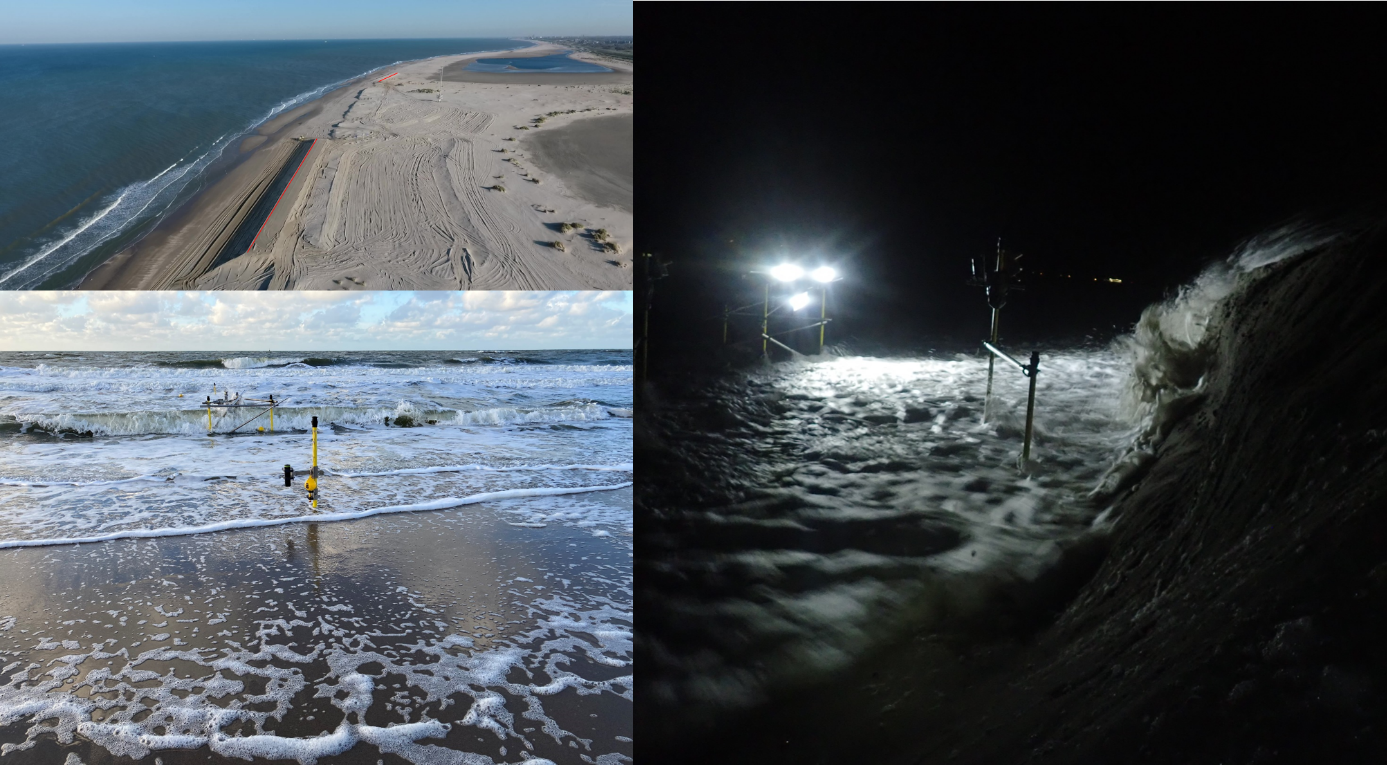J. Rutten1*, P.P.J. Van Wiechen1, S. De Vries1, A.J.H.M. Reniers1, K.A. Anarde2, R.S. Mieras3, M. Wrobel2, M.F.S. Tissier1
1 Delft University of Technology
2 North Carolina State University
3 University of North Carolina Wilmington
*corresponding author: j.rutten@tudelft
Waves propagating onshore can reflect at the beach and propagate back offshore. Wave reflection is frequency dependent with lower frequencies reflecting stronger than higher frequencies. Furthermore, steep slopes enhance reflection. As a result, reflection patterns can change substantially when waves start to reach the steep dune face during storm surge. For example, reflection of higher frequencies will become more important, influencing run-up patterns and thus water levels at the dune. Measurements of wave transformation and reflection during dune attack are limited along the Dutch coast as the water level only reaches the dune foot under intense storm events, which are challenging conditions for instrument deployment. Here, we present a field data set with three dune attack events (November 2021, December 2021 and January 2022) collected during the RealDune/REFLEX measurement campaign at the Sand Motor. Dune attack was ensured by constructing two artificial dunes near the high water line, designed to erode during moderate storms and therefore allowing to measure several dune erosion events. The two dunes (each 5.5 m high, 150 m long and 7 m wide) are fronted by a substantially different bathymetry and beach topography and differ slightly in coastline orientation due to the curvature of the Sand Motor. Pressure and velocity were measured across instrument arrays at each dune. In addition, beach and dune evolution was captured with stereo photography, sonar, and line-scanning LiDAR. At the conference, changes in time- and frequency-dependent reflection during the three dune attack events will be presented.

Figure 1:Aerial picture of field site with red lines indicating the two dune crests (top left), instrument array at RealDune/REFLEX campaign (bottom left) and runup on dune face during storm (right).
Acknowledgments: The RealDune and REFLEX projects are financially supported through TKI Deltatechnologie existing of Rijkswaterstaat, Witteveen en Bos, Arcadis, STOWA, Deltares, Nortek and TU Delft. We acknowledge Pieter van der Gaag, Arie van der Vlies and Arno Doorn for technical support during the field campaign.
I. Surname1*, F.N. Another-Surname2 , Y. Next-Surname2
1 University Name, Country; 2 Organization Name, Country
* Corresponding author: mail.name@organization.org


